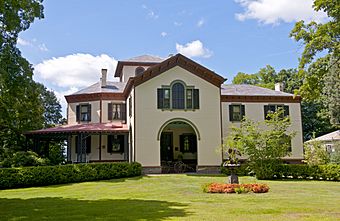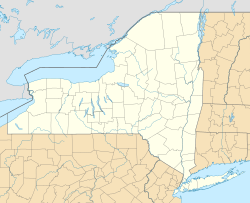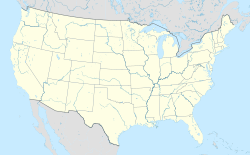Locust Grove (Poughkeepsie, New York) facts for kids
|
Locust Grove
|
|

West (front) elevation in 2014
|
|
| Location | Town of Poughkeepsie, NY |
|---|---|
| Nearest city | Poughkeepsie |
| Area | 200 acres (81 ha) |
| Built | 1851 |
| Architect | Alexander Jackson Davis |
| Architectural style | Italianate |
| NRHP reference No. | 66000515 |
Quick facts for kids Significant dates |
|
| Added to NRHP | October 15, 1966 |
| Designated NHL | January 29, 1964 |
Locust Grove is a special historic place in the Town of Poughkeepsie, New York. It's a large estate, about 200 acres, with beautiful gardens, trails, and old buildings. From here, you can see amazing views of the Hudson River.
The main house at Locust Grove was designed by a famous architect named Alexander Jackson Davis. It was built for Samuel F. B. Morse, who invented the telegraph. The house is in the Italianate style and was finished in 1851.
Today, Locust Grove is open to everyone. You can take tours of the mansion, explore the nature trails, and see old exhibits. It's also a popular spot for special events.
Contents
History of Locust Grove
Early Owners and Name
The first person to own Locust Grove was Henry Livingston Jr.. He bought the land from his father in 1771. Henry named the estate "Locust Grove" because of the many black locust trees growing there.
After Henry Livingston Jr. passed away, his family sold the property. A wealthy couple from New York City, John and Isabella Montgomery, bought it. They moved the farm closer to the river and built a small cottage.
Samuel Morse's Home
Samuel F. B. Morse bought Locust Grove in 1847. This was three years after he made his big invention, the telegraph. In 1851, Morse hired architect Alexander Jackson Davis. They worked together to change the small cottage into a grand Italianate villa.
Morse loved his new home. He spent the rest of his life improving the land around the house. It became his favorite summer retreat.
The Young Family's Care
After Samuel Morse died in 1872, his family didn't spend as much time at Locust Grove. They eventually rented out the estate. In 1895, a man named William Young moved in as a tenant. He loved the property so much that he bought it from Morse's family in 1901.
William and his wife Martha knew how important the estate was. They worked hard to restore the mansion and its gardens. They added modern things like central heating and running water. They also built a new dining room and guest rooms.
The Young family had a huge collection of art and old items. These items are now displayed in the mansion's 40 rooms. There are more than 20,000 pieces in their collection.
Preservation and Public Access
William and Martha Young's children, Annette and Innis, also helped care for Locust Grove. They continued to preserve and restore the house. Because of their efforts, Locust Grove was named a National Historic Landmark in 1964.
Annette Young passed away in 1975. In her will, she made sure that Locust Grove would be open to the public. She wanted her house, property, and art collections to be shared. Five years later, in 1980, Locust Grove officially opened its doors.
Today, visitors can take guided tours and attend special events. There are also five miles of trails through the woods. These trails were once old carriage roads from the 1800s. You can walk the grounds for free, but there is a small fee for guided tours of the mansion.
See also



